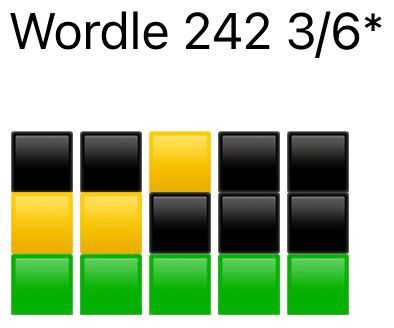why wordle won
Unless you have been living under a rock, you would know what wordle is. It began slowly at first - people sharing statuses with green, yellow and black boxes inciting curiosity. Then you check it out and get addicted to doing the same thing and ‘playing it forward’.
This is an essay about how wordle became viral, which means it’s inherently a study of viral products. Just a disclaimer upfront - what we explore today would at best be necessary but not sufficient to virality.
Simplicity
This is fairly obvious, if a large people have to catch on to something quickly, it has to be simple enough. Wordle’s simplicity lies in its UI (just the wordplay, a small help screen, sharing and stats so far).
It does not have the typical game elements - invite to your friends, earn coins by playing games, limited lifelines etc. Not that those elements dont help a game, but they often make the game a world that you have to decipher and that is not simple.
The game play itself is much simpler than crossword. It’s not long, doesn’t require extensive knowledge and still is just hard enough for people to be involved.
The extensive game elements that wordle doesn’t have, are also usually put when the game is designed with the objective to appeal to a lot of people. Wordle was just a gift of a boyfriend to his girlfriend, nothing more. Very personal.
Guess what other things were personal?
Google, as the founders were not happy themselves with search and wanted to make it better for themselves first.
Airbnb, as the founders wanted to earn money to pay rent and found that they could do that by hosting people.
Facebook, as Zuck wanted real identities on the internet.
Wordle is not as big as them, but the biggest companies often start this way.
Frictionless
Everything about wordle is frictionless. It doesn’t require an app to download, doesn’t require you to login or enter even a username.
There are essentially only two steps once you land on that page:
Play
Share
The biggest friction that wordle eliminates is synchronicity. You can play the game at your time (like people have been doing with crosswords since ages), it’s single player but can generate discussions.
When people start out to design viral products, there’s often this linear thinking of making it social or multiplayer. The thought process is that as more people come and play/use, they will call more people to play/use the product with them to use the product. Doesn’t work as well in practice because there’s a reputation cost and friction to inviting someone to do something with you.
Multiplayer mode is doable but much harder to crack than single mode.
Contraints
Deliberately designed constraints has been a big theme in some of the popular consumer products - Twitter limiting tweets to only 140 characters, Snapchat allowing messaging only through camera (which was pretty radical for its time), Clubhouse using only live audio as a format etc.
As Wardle himself said, the breakthrough was limiting players to one game per day. That hack, partially inspired by the Spelling Bee enforced a sense of scarcity which leaves people wanting more.
As the internet becomes more abundant from scarce, examples of engineered scarcity to get attention only increase. And that begets new changes.
Sharing
The initial traction of wordle was limited to friends and relatives, and would have stayed as much, had Wardle not added the unique sharing element. Unlike a simple link, it’s well-designed between mystery, status (3/6 vs 6/6) and aesthetic. This contributed to the viral loop more than anything else.
There are other factors also that can contribute to virality of products
something cool —> Cool can of course mean different things to different people, it can mean the physics of throwing birds (Angry Birds) or making a moustached character run around. It can also mean anything weird or funky, just on the border of zeitgeist.
relatability —> Pokemon Go became viral because of the nostalgic factor and relatability of ‘every 90s kid’ to Pokemon.
Combining these elements were crucial in the success of Wordle. While nothing can guarantee virality, the fundamental principles underlying wordle can be made useful to make products great and at least set the right podium for virality.
Related: Ventakesh Rao’s post on wordle and derangements. Very interesting.


